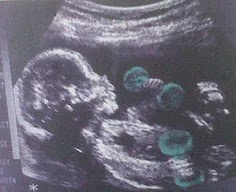Guidelines from Canada, Japan, Spain, and the US described contraindications to exercise in absolute and relative terms; however, guidelines from Norway and the United Kingdom did not make these distinctions.
Absolute contraindications refer to conditions where exercise is not recommended, whereas relative contraindications refer to conditions where the risks of exercise may exceed the benefits.
Generally, where two or more countries identified contraindications, they agreed on whether it was an absolute or relative contraindication.
The six countries (Canada, Japan, Norway, Spain, United Kingdom, US ACOG) agreed on several contraindications to exercise including anemia, persistent bleeding, cardiovascular disease, cerclage or incompetent cervix, multiple gestation, preeclampsia or pregnancy induced hypertension, premature contractions or labor, premature rupture of membranes, and thyroid disease. Four or five of the six guidelines identified contraindications for diabetes mellitus, eating disorder, morbid obesity, and placenta previa.
| Guidelines | ||||||
|---|---|---|---|---|---|---|
| Canada | Japan | Norway* | Spain | United Kingdom* | United States (ACOG) | |
| Absolute Contraindications: | ||||||
| Abnormal amniotic fluid | X | |||||
| Bleeding, persistent | 2nd–3rd trimester | X | months 4–9 | X | 2nd–3rd trimester | 2nd–3rd trimester |
| CVD | serious | X | X | active CVD, cardiac failure, rheumatic disease | X | hemodynamically significant |
| Cerclage, incompetent cervix | X | X | X | X | cervical weakness | X |
| Diabetes mellitus | uncontrolled type 1 | |||||
| Fetal abnormality | X | |||||
| Fetal growth restriction | X | X | ||||
| History of fetal growth restriction | X | X | reduce in 2nd–3rd trimester | |||
| History of miscarriage, >=3 | X | |||||
| History of preterm birth | X | |||||
| History of preterm labor | X | reduce in 2nd–3rd trimester | ||||
| Hypertonia, poorly controlled | X | |||||
| Infectious disease, acute | X | |||||
| Lung disease, restrictive | X | X | X | X | ||
| Multiple gestation | triplets and higher | X | X | X | X | X |
| Placenta previa | symptomatic bleeding | X | X | after 26 weeks | after 26 weeks | |
| Preeclampsia, pregnancy induced hypertension | X | X | X | X | X | X |
| Premature contractions or labor | X | X | X | X | X | X |
| Premature rupture of membranes | X | X | X | X | X | X |
| Respiratory disease, serious | X | pulmonary embolism | ||||
| Rh+/Rh− immunologic disorder | X | |||||
| Systemic disorder, uncontrolled | X | |||||
| Thyroid disease, uncontrolled | X | |||||
| Thrombophlebitis | X | |||||
| Relative Contraindications: | ||||||
| Anemia | hemoglobin <100 g/L | or other bleeding disorder | X | severe | hemoglobin <100 g/L | severe |
| Arrythmia | X | non-assessed | unevaluated | unevaluated | ||
| Bronchitis, chronic | X | X | X | X | ||
| Cardiovascular disorder, mild to moderate | X | X | X | |||
| Diabetes mellitus | X | poorly controlled | poorly controlled | poorly controlled type 1 | ||
| Eating disorder | X | anorexia | X | X | ||
| History of extremely sedentary lifestyle | X | X | X | |||
| History of fetal growth restriction | X | |||||
| History of preterm birth | X | X | ||||
| History of preterm labor | X | X | ||||
| History of spontaneous abortion | X | |||||
| Hypertension | X | X | poorly controlled | poorly controlled | ||
| Intrauterine growth restriction | X | X | X | |||
| Malnutrition | X | X | X | |||
| Multiple gestation, twins | after 28 weeks | |||||
| Obesity, morbid (BMI >40 kg/m2) | X | X | X | X | X | |
| Orthopedic limitation | X | X | X | |||
| Respiratory disorder, mild to moderate | X | X | ||||
| Seizures, poorly controlled | epilepsy | X | X | |||
| Smoker, current | >20 cigarettes/day | >20 cigarettes/day | heavy smoker | |||
| Thyroid disease | X | X | X | poorly controlled | poorly controlled hyperthroidism | |
| Underweight, extreme (BMI<12 kg/m2) | extreme thinness | extreme thinness | X | |||
BMI=body mass index; CVD=cardiovascular diseaes
*Distinction between relative and absolute contraindications not made.
Note:
The Australia, Denmark, France, and USDHHS guidelines did not include
contraindications, as the guidelines were all geared towards healthy
women with normal pregnancies.
References:
Guidelines for Physical Activity during Pregnancy: Comparisons From Around the World. https://www.ncbi.nlm.nih.gov/pmc/articles/PMC4206837/





No comments:
Post a Comment